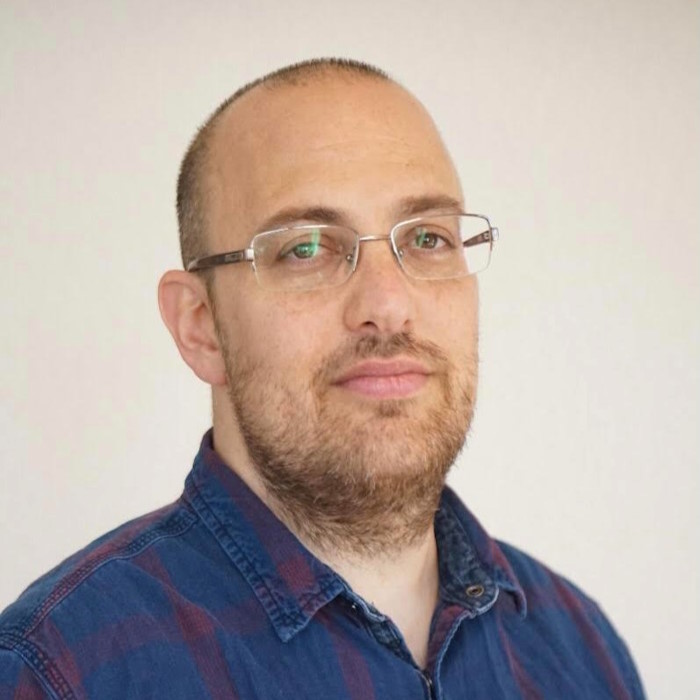Dr. Shahaf Peleg
Shahaf Peleg, Ph.D. is Tenured Group Leader at the Research-Institute for Farm Animal Biology (FBN) and the Cofounder of Luminova Biotech.
At FBN since 2018, Shahaf has worked in the Laboratory for Metabolism, Epigenetics, and Longevity where his research interest is in MtON (Mitochondria-ON). He is using light to optogenetically power mitochondria.
One of his studies shows that opposing the age-related decline in mitochondrial membrane potential leads to increased healthspan and lifespan in Caenorhabditis elegans. This result points to mitochondrial charge as a fundamental regulator of biological aging. Read Optogenetic rejuvenation of mitochondrial membrane potential extends C. elegans lifespan. Watch Converting the light energy to mitochondrial chemical energy to increase lifespan.
In 2023, he cofounded Luminova Biotech, a company whose mission is to translate mtON technology into humans. They aim to harness the energy of light into our mitochondria to improve and increase lifespan. Read Titan mice as a model to test interventions that attenuate frailty and increase longevity.
Previously, between 2017 and 2018, Shahaf was Visiting Scientist at Ludwig-Maximilians Universität München and at the Qingdao University in China. Read Biphasic Modeling of Mitochondrial Metabolism Dysregulation during Aging, The Metabolic Impact on Histone Acetylation and Transcription in Ageing, and Rapid and transient oxygen consumption increase following acute HDAC/KDAC inhibition in Drosophila tissue.
Shahaf earned his Ph.D. at the University of Göttingen in 2010 as part of the IMPRS neuroscience program with his dissertation Altered Histone 4 K12 Acetylation is Associated with Age Dependent Memory Impairment in Mice. His thesis became one of his most cited papers published by the American Association for the Advancement of Science in 2010.
Shahaf focused on genetic changes that affect memory and how our brain functions with age. He was part of the Epitherapy project that came up with promising findings and moved us closer to developing memory-boosting drugs. His work, published in Science, discovered a change in a protein that was linked to cognitive decline in aging mice. Restoring this protein was found to turn learning-induced genes back on and to lead to the recovery of thinking abilities in mice. Read Five Minutes with Dr. Shahaf Peleg.
He earned his Master’s Degree of Science in 2008 from Georg-August-Universität Göttingen, Germany and his Bachelor’s Degree of Science from Ben Gurion University, Israel in 2006 where he investigated the effect of the olfactory epithelial proliferation of new neurons in the olfactory bulb.
After his Doctorate, he was Visiting Scientist at The European Molecular Biology Laboratory (EMBL) in Heidelberg, Germany in 2011. The lab drives visionary research and technology development in the life sciences.
In the same year, he started his Postdoc at Ludwig-Maximilians-Universität (LMU) in München, where he investigated the connection between metabolism and epigenetics during aging of Drosophila until 2016. Read Life span extension by targeting a link between metabolism and histone acetylation in Drosophila.
Between 2014 and 2016 he was also a Postdoc Fellow at AXA, France for two years. He did a short Postdoctoral Fellow visit to Tohoku University in Japan in 2016, where he worked on neuroscience behavior, specifically, short-term collaboration on Drosophila behavior during aging. Read Age-induced metabolic changes in protein acetylation and their role in cognitive loss. Watch Lower Epigenetic Reception for Longer, Healthier Lives.
Watch Energy Replacement in the Light of Aging and Turn your mito ON! — Harnessing Light Energy to Rewire Metabolism During Aging. Watch Shahaf Peleg at ARDD2022: Energy replacement: Harnessing the energy of light to increase lifespan.
Read Circadian acetylome reveals regulation of mitochondrial metabolic pathways and How to Slow down the Ticking Clock: Age-Associated Epigenetic Alterations and Related Interventions to Extend Life Span.
Visit his Academic page, LinkedIn profile, Google Scholar page, and ResearchGate profile. Follow him on My Science Work and Twitter.
